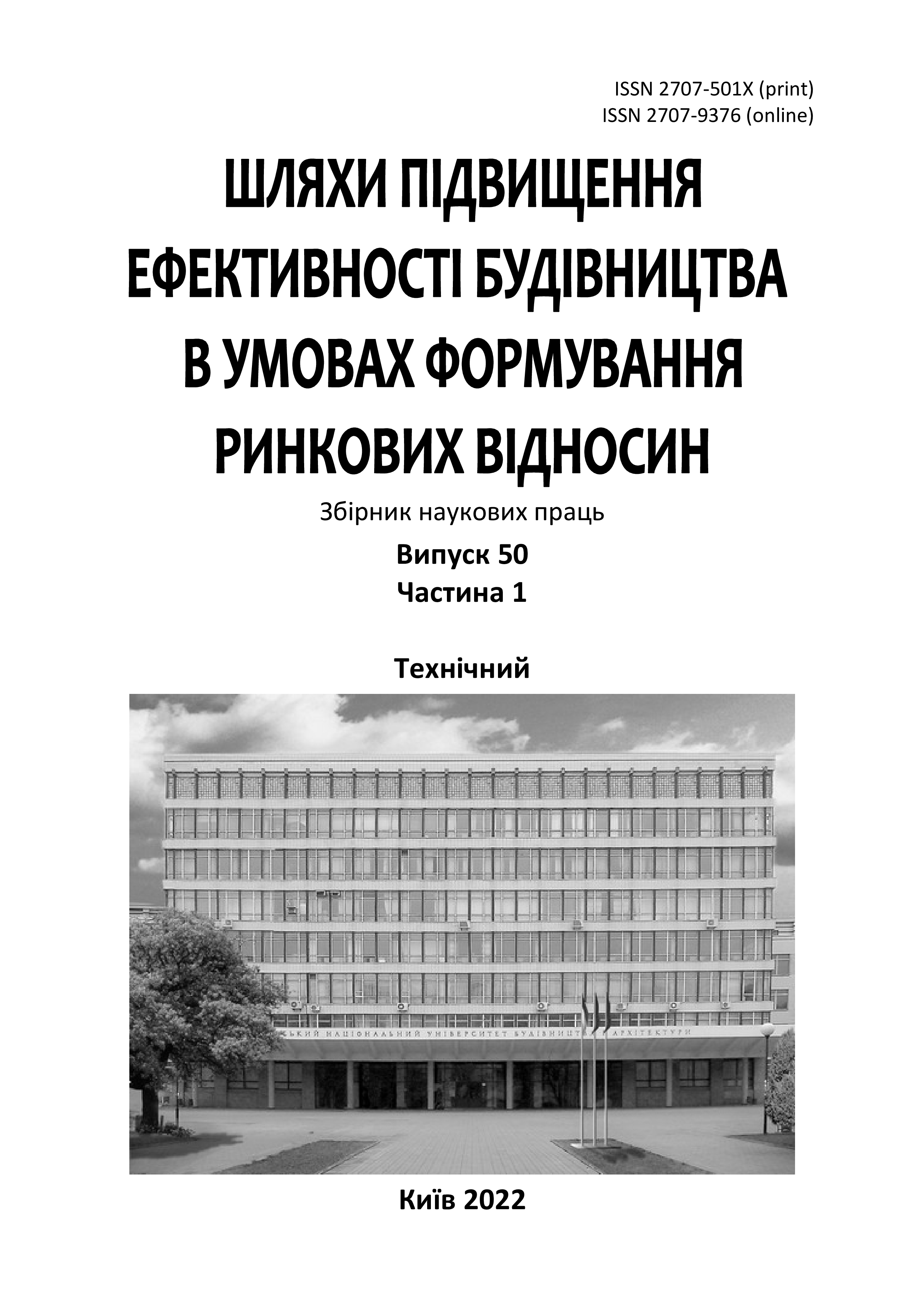Prospects of development of acid–resistant hybrid cements on the basis of alkaline–activated binders
DOI:
https://doi.org/10.32347/2707-501x.2022.50(1).15-21Keywords:
alkaline binders, acid resistance, exposure to aggressive environments, the process of structure formation, the formation of acid–resistant phasesAbstract
Quite often during operation, construction products and structures are exposed to aggressive environments, which leads to a decrease in their physical and mechanical characteristics and durability in general.
To date, there is a wide range of options for eliminating the effects of structural failure, and new recommendations are being developed to prevent destructive processes that take place in the body of artificial cement stone. The issue of improving the acid resistance of building materials is no exception. Unfortunately, the existing acid–resistant materials, although characterized by high resistance to operation in acidic environments, but under the influence of water and with the change of environment to neutral or alkaline, they are also destroyed. This applies directly to acid–resistant materials based on liquid glass.
An analysis of existing research has confirmed the effectiveness of using alkaline–activated binder systems as a basis for acid–resistant cements especially when comparing them with Portland cement. This is primarily due to the difference in the phase composition of their cement stone, which is characterized by the absence of highly basic hydrosilicates of calcium, etringite, free lime and the presence of alkaline and alkaline earth hydrosilicate and hydroaluminosilicate neoplasms. The latter, as research experience has shown, provide improved performance properties of materials based on alkaline–activated binders. They are also characterized by increased acid resistance. Thus, the main task of research is to determine the optimal ratio in the cement stone of the hybrid composition of the phases of the systems систем СaO – SiO2 – H2O; Na2O – CaO – Al2O3 – SiO2 – H2O and Na2O – Al2O3 – SiO2 – H2O, which will provide both hydrating properties of the binder and high acid resistance.
The concept that clearly reflects the prospects of research is to consider the main factors influencing the formation of acid–resistant phases: "composition – properties – structure – technology". To study the physicochemical conditions of synthesis it is necessary to study model systems of different compositions of R2O – CaO – Al2O3 – SiO2 – H2O, as well as study of technological factors such as component composition, cooking conditions, curing conditions. As a raw material base, it is advisable to use man–made products of industrial production, which are generally represented by slag, ash, etc.
References
Palomo A. Krivenko P. Garcia–Lodeiro I. A review on alkaline activation: New analytical perspectives, Materiales de Construccion (2014) 64(315) https://dx.doi.org/ 10.3989/mc.2014.00314
Krivenko, P.V.: Alkaline cements: from research to application. In: Lukey, G.C. (ed.) Geopolymers 2002. Turn Potential into Profi t, Melbourne, Australia. CD–ROM Proceedings. Siloxo Pty. Ltd. (2002).
Бродко О.А. Шлакощелочные вяжущие и бетоны повышенной кислотостойкости. Диссертация на соискание ученой степени кандидата технических наук, Киев 1991 г.
Zhang W., Yao X., Yang T., Zhang Z. The degradation mechanisms of alkali–activated fly ash/slag blend cements exposed to sulphuric acid. Construction and Building Materials 186 (2018) 1177–1187. https://doi.org/10.1016/j.conbuildmat.2018.08.050
Khan M. N. N., Kuri J. C., Sarker P. K. Sustainable use of waste glass in alkali activated materials against H2SO4 and HCl acid attacks. Cleaner Engineering and Technology 6 (2022) 100354. https://doi.org/10.1016/j.clet.2021.100354
Gourley J. T., Johnson G.B. The corrosion resistance of geopolymer сoncrete sewer pipe. Concrete in Australia (2019), Vol 43 No 1. https://www.researchgate.net/publication/336639705
Temuujin J., Minjigmaa А., Lee M., Chen–Tan N., A. van Riessen. Characterisation of class F fly ash geopolymer pastes immersed in acid and alkaline solutions. Cement and Concrete Composites 33 (2011) 1086–1091. https://doi.org/10.1016/j.cemconcomp.2011.08.008
Ukrainczyk N., Vogt O. Geopolymer leaching in water and acetic acid (2021). RILEM Technical Letters (2020) 5: 163‐173 https://doi.org/10.21809/rilemtechlett.2020.124
Krivenko, P., Petropavlovskyi, O., Kovalchuk, O. A comparative study on the influence of metakaolin and kaolin additives on properties and structure of the alkali–activated slag cement and concrete / Eastern–European Journal of Enterprise Technologies, Volume 1, Issue 6–91, 2018, pp. 33–39. https://doi.org/10.15587/1729–4061.2018.119624
Downloads
Published
How to Cite
Issue
Section
License

This work is licensed under a Creative Commons Attribution 4.0 International License.
Authors who publish with this journal agree to the following terms:
- Authors retain copyright and grant the journal right of first publication with the work simultaneously licensed under a Creative Commons Attribution License that allows others to share the work with an acknowledgement of the work's authorship and initial publication in this journal.
- Authors are able to enter into separate, additional contractual arrangements for the non-exclusive distribution of the journal's published version of the work (e.g., post it to an institutional repository or publish it in a book), with an acknowledgement of its initial publication in this journal.
- Authors are permitted and encouraged to post their work online (e.g., in institutional repositories or on their website) prior to and during the submission process, as it can lead to productive exchanges, as well as earlier and greater citation of published work (See The Effect of Open Access).

